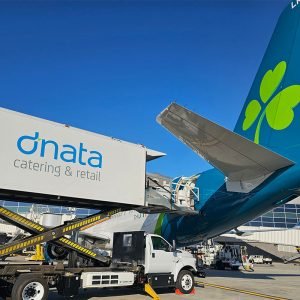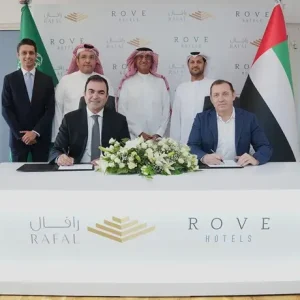Sheikh Zayed Road, officially known as E11, is more than just a highway. It’s the beating heart of the United Arab Emirates. Spanning over 550 kilometers, it connects some of the country’s most important cities — from Abu Dhabi in the west to Ras Al Khaimah in the north.
If you’ve ever visited or lived in the UAE, chances are you’ve travelled on Sheikh Zayed Road. This highway is where the nation’s progress and development come to life. It’s filled with skyscrapers, luxury hotels, business hubs, and millions of cars moving every day. But there’s more to this road than just traffic — it tells the story of a nation’s growth.
How It All Started
Sheikh Zayed Road was not always the glittering mega-highway we see today. When it was first constructed in the 1970s, it was simply known as the “Defence Road.” Back then, it was just a modest roadway linking Abu Dhabi and Dubai. But as the UAE began to grow, leaders realized the importance of having a strong transportation network.

In the late 1980s and early 1990s, major expansions were made to the road. It was renamed in honor of Sheikh Zayed bin Sultan Al Nahyan, the founding father of the UAE. His vision was to connect all parts of the country — and E11 became a symbol of that unity.
What Makes Sheikh Zayed Road So Special?

Sheikh Zayed Road isn’t just another highway. It cuts right through the center of Dubai, with some of the most famous buildings lining both sides. From the world’s tallest building — Burj Khalifa — to the Dubai Mall and the Emirates Towers, many of Dubai’s landmarks sit right along this road.

The road has up to 12 lanes in some sections, making it one of the widest highways in the world. Each day, thousands of commuters, tourists, and heavy transport vehicles use this road to travel between cities. It connects Dubai to Sharjah, Ajman, Umm Al Quwain, and Ras Al Khaimah to the north, and to Abu Dhabi in the south.
Key Highlights Along the Road

- Downtown Dubai
One of the busiest and most popular parts of Sheikh Zayed Road. It’s where tourists go to see the Burj Khalifa, the Dubai Fountain, and shop at the world-famous Dubai Mall. - Business Bay
This is Dubai’s central business district. Filled with offices, banks, and luxury apartments, it plays a key role in the country’s economy. - Dubai World Trade Centre
A historic landmark that once was the tallest building in the city, the Trade Centre still hosts major exhibitions and global conferences. - Jebel Ali Free Zone (JAFZA)
Towards the southern end of Sheikh Zayed Road is Jebel Ali, a massive port and industrial area. This is where much of the UAE’s shipping and trade activities happen. - Metro Line
The Dubai Metro runs parallel to Sheikh Zayed Road, making commuting easy for people who prefer public transport. With multiple stations along the way, it’s one of the most efficient metro systems in the region.
More Than Just a Road: A Lifeline
Sheikh Zayed Road has changed the way people live and work in the UAE. For many, it’s not just a route from point A to B — it’s part of their daily life. Residents drive to work, students take buses to school, and delivery drivers transport goods across cities — all on this highway.
Over the years, this road has also witnessed some major moments — from National Day parades to New Year’s Eve fireworks. It’s been the site of celebrations, festivals, and even protests. It’s where the UAE showcases its identity to the world.
Future Plans and Developments
The UAE government continues to improve the road and its surrounding areas. New interchanges, wider lanes, and smart traffic systems are being added to reduce congestion. There are also plans to create more pedestrian-friendly zones and cycling tracks in areas nearby.
The upcoming Dubai Urban Plan 2040 includes goals to make Dubai more accessible and connected. Sheikh Zayed Road will play a big role in these changes, linking future residential zones with green spaces, business hubs, and transport terminals.
Challenges of a Busy Highway
As iconic as it is, Sheikh Zayed Road has its challenges. Traffic congestion during rush hours can be frustrating for daily commuters. Accidents and breakdowns often slow down travel times. However, authorities are working hard to make the road safer and more efficient.
Dubai Police and the Roads and Transport Authority (RTA) regularly launch road safety campaigns and smart monitoring systems to keep the highway safe. The introduction of AI traffic cameras and drone surveillance has already made a noticeable difference.
Did You Know?
- Sheikh Zayed Road passes through six emirates: Abu Dhabi, Dubai, Sharjah, Ajman, Umm Al Quwain, and Ras Al Khaimah.
- Some of the tallest residential and commercial towers in the Middle East are located along this highway.
- There’s a dedicated Sheikh Zayed Road Instagram page where users post photos of the skyline, traffic updates, and more.
- During Expo 2020, the road saw record-high traffic as visitors from around the world came to the city.
A Road That Tells a Story
Sheikh Zayed Road is more than just asphalt and concrete. It’s a symbol of the UAE’s dreams, efforts, and determination. It shows how a country can rise from a desert into a global hub of business, tourism, and innovation.
Every car that drives on E11, every building that rises next to it, and every milestone that takes place nearby — all add to the story of the UAE. Whether you’re stuck in traffic, admiring the skyline, or heading to a weekend getaway, Sheikh Zayed Road is always part of the journey.
Also read: This 500-Year-Old Mosque Hides Secrets of UAE’s Past














